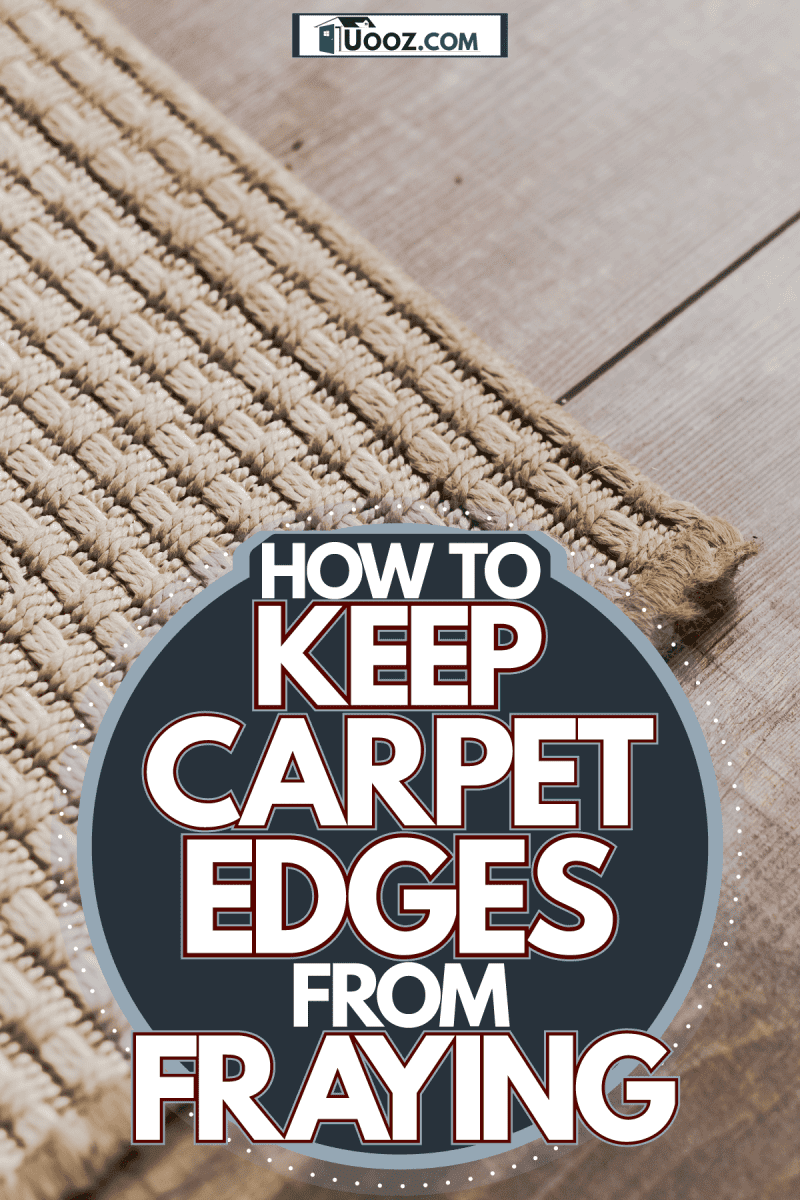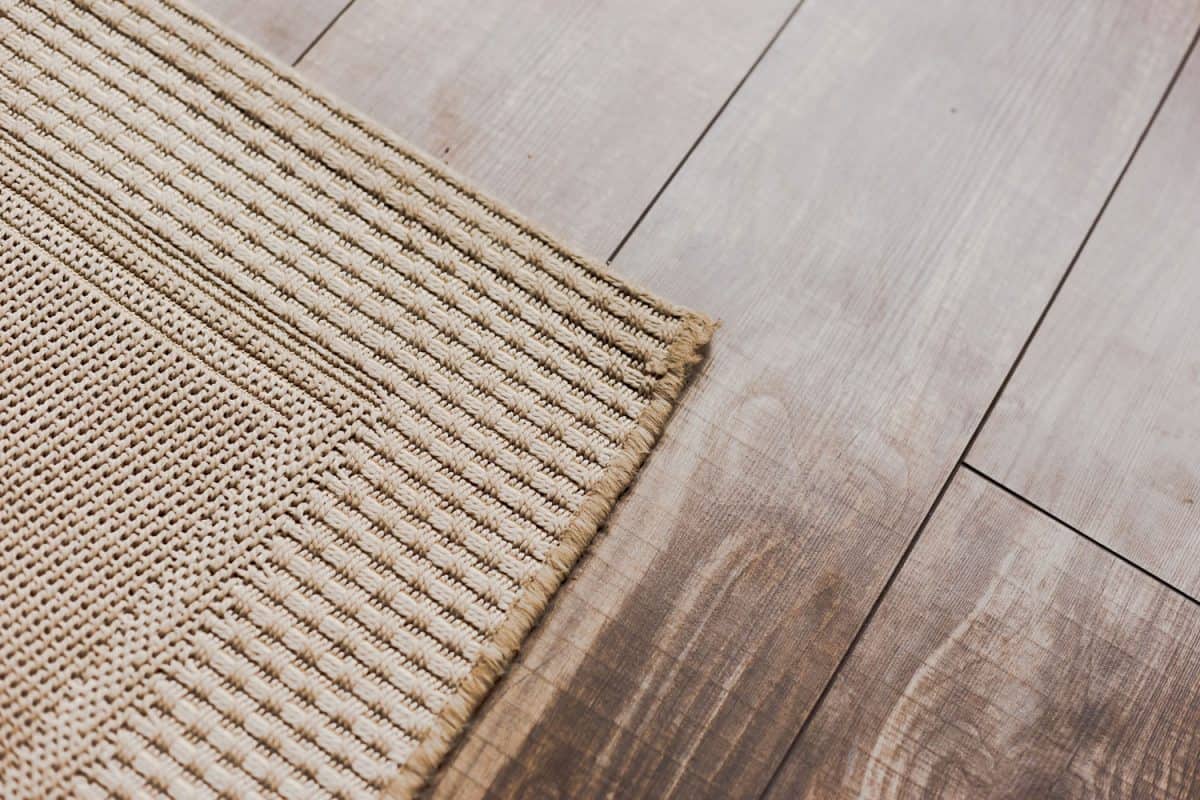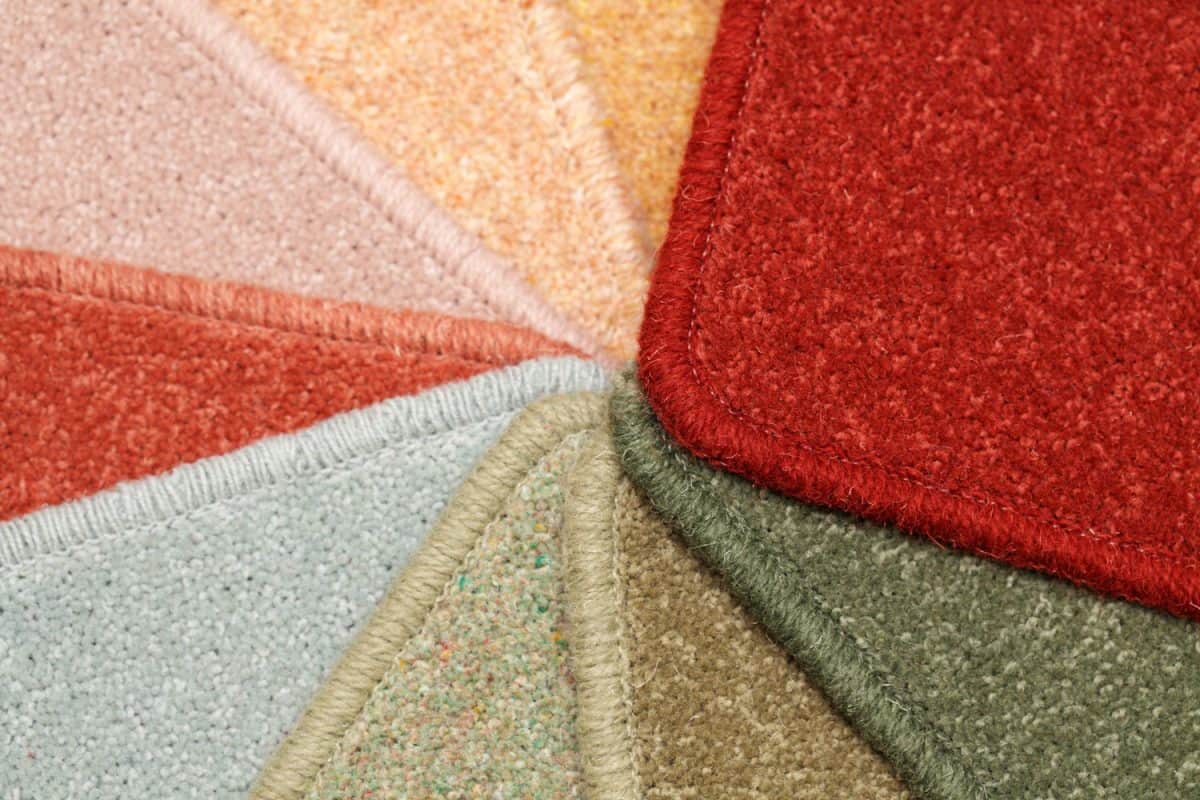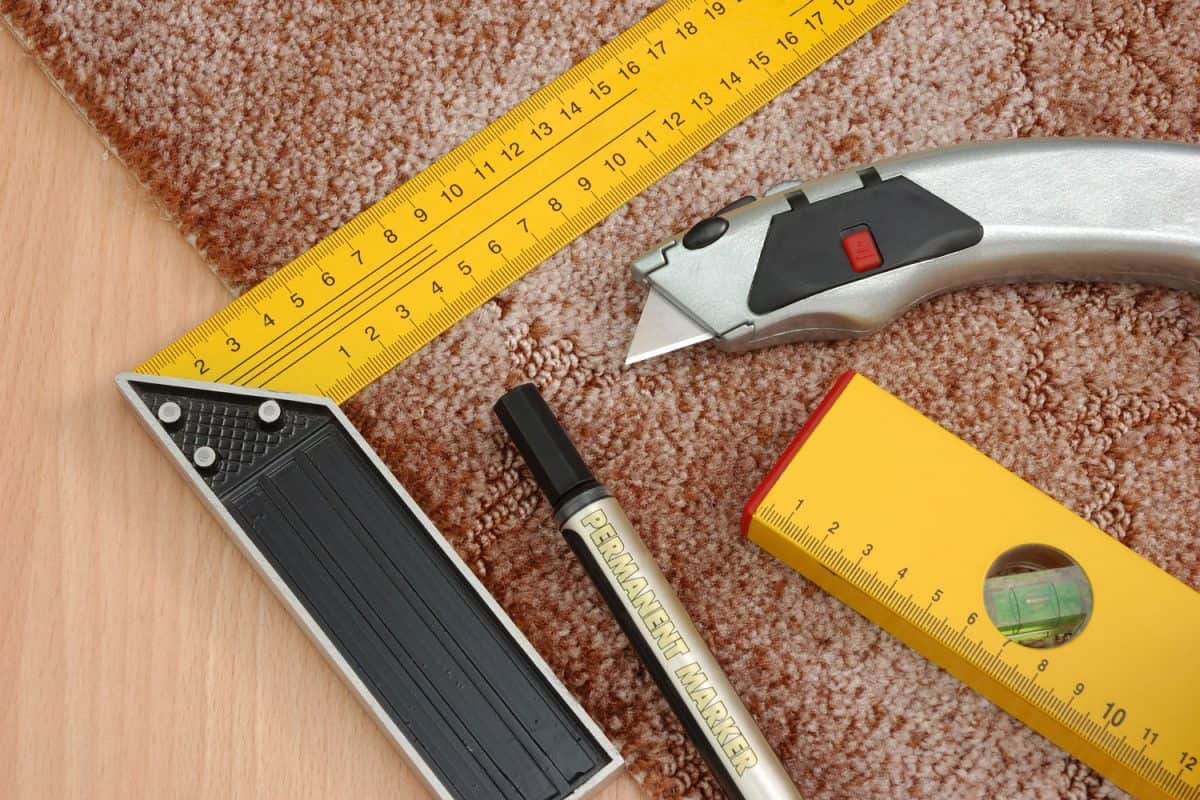Every homeowner wants to keep their carpet looking intact and beautiful. Yet, wear and tear on carpet edges is a certainty for carpets that see any amount of actual living. So what can be done to keep those edges from fraying? Well, we have researched the very question and answered it for you right here.
Cleaning your carpets well is a great way to prevent fraying, as it removes debris that can cause friction and excess wear. Utilizing area rugs in high-traffic areas as a means of protection is another possibility for vulnerable spots.
There are more ways to protect your carpet and treat fraying from sealant to your vacuum cleaner. In the article below, we'll go into these and some other methods of combatting fraying carpet edges, so continue reading for more help.

Why is my carpet fraying?
It's easy to chalk the fraying of your carpet down to 'general wear and tear,' but that's hardly a helpful realization in terms of aiding the problem. Dealing with fraying comes down to two steps in the end: realizing what's making your carpet fray and going from there.
Experts speak of several reasons why your carpet is fraying, and each comes with a solution or method of prevention tied to it. We'll look into some of the big ones now.

Increased friction on dirty carpets
A potential and relatively common reason for new carpet starting to fray is increased friction and grind due to dirt and debris. If you aren't taking good care of your carpets, getting them cleaned and treated regularly, dirt particles and debris are working their way in between the fibers.
As the debris works in, they are grinding against the fibers causing excess friction. This extra friction accelerates the breakdown of your carpet fibers and leads to premature fraying. You can't keep your carpets from being well used, but removing these particles goes a long way in extending their life.
It's recommended you get your carpets cleaned at least once a year. If your home has pets or young children, you might consider raising that timeframe to around every six months. Professional cleaners have the equipment to get to dirt and grime deep in the carpet, where your vacuum cannot reach.
Areas dealing with high amounts of traffic
It's understandable, if frustrating, why the edges of your carpet along with certain high traffic areas undergo fraying. It might seem like a lost cause at first. Someone is going to walk on the carpet. But there is one thing you can do to protect high traffic spots bearing the brunt of activity.
Area rugs are an excellent solution for covering up these spots and offering your carpet some protection. Even when your rug starts to get a bit worse for the wear, replacing it is far less expensive than replacing your carpet.
Area rugs offer you the chance to customize your flooring further, adding a splash of color or design on top of your carpeting. They will also protect your carpet from spills, spots, and grime that could do further damage.
Frequent furniture movement
If you're frequently moving your furniture, make sure you aren't dragging it across the carpet repeatedly. Doing so will cause damage over time to the fibers in your carpet. Always pick up rugs and furniture off the carpet when moving them around for cleaning or renovating. It's a simple act that goes a long way.
A dragging beater bar
In perhaps a cruel twist of fate, your vacuum cleaner can be doing more damage to your carpet. The vacuum component known as the beater bar is responsible for separating the fibers, allowing the vacuum to clean out debris. The beater bar can also be manually lowered or raised to your specifications.
The problem arises when one lowers the beater bar too far, causing the brush to become aggressive in its cleaning. Doing so leads to premature fraying and excess stress on the fibers. The brush should ideally be at a level where it glances over the carpet.
Read now on Uooz.com: 'Does a Floor Steamer Clean Carpets?'
What is carpet binding tape?
Carpet binding tape is one of several methods homeowners can employ to combat fraying carpet edges. It binds the edges of carpets, area rugs, and staircases to make them more appealing and fight fraying. People also use it in recreational vehicles, boats, and cars.
Your average binding tape is made of cotton or polyester and comes in a variety of colors. These are so you can match your carpet binding tape to any rug or carpet you might have in your home.
Carpet professionals will use a serging machine to apply binding tape if you want it professionally done. These come in portable varieties and stationary varieties for use in carpet stores. If looking to apply it yourself, read the instructions on your tape after purchase.
Click here to see this on Amazon.
How do you finish raw carpet edges?

There are a couple of ways you can go about finishing your carpet edges. These offer a range of aesthetic and visual appeal and can be made to fit into the overall decor of any room in your house. Some of these require machine application, and you can do some with tape alone.
- Binding classic edging: The most popular choice for a carpet edge or area rug. It uses binding tape and comes in a variety of colors. You can do this binding method by hand.
- Serging classic edging: Uses a serging machine and serging yarn to offer a classy and more sophisticated look to your carpet edges.
- Canvas and linen premium edging: Canvas and linen are popular choices for rugs and low-pile carpets. You can customize it to your liking with various colors and width choices.
- Leather, fabric, and fringe edging: More premium options that further customization and elegant options.
Some of the more advanced options above might require professional attention for best results. But if your main goal is merely sealing your edges to prevent fraying, binding is a great choice.
Read now on Uooz.com: 'What kind of flooring can you put over carpet?'
How do you cut carpet cleanly?

Cutting a carpet can be a risky proposition for those ill-prepared. Damaging your carpet is incredibly easy if you don't know what you're doing when cutting. For that reason, a lot of people go without trying to modify their carpet whatsoever. But you can do it.
If a rug is an otherwise perfect fit for your room but maybe too big to fit comfortably, there are ways to go about cutting it down to size. Professionals can always be brought in to make significant modifications, ensuring all ends have matching bindings to keep your rug looking clean.
If you don't have professional help in the budget, there are some steps you can use to make sure the process goes smoothly.
Measure correctly
Take the time to measure the cuts you want to make multiple times before you start cutting. You can't undo cuts once you've made them, so take your time. You can mark the lines you're considering making by using painter's tape to map them out beforehand.
Marking the edges
Use a straight edge or a ruler to guide your cuts before making them. If you're thinking of shaping the rug into something unique, look into using a template shape to help guide your cuts. Always double-check your lines before cutting.
Making clean cuts
Set your rug upside down on a sturdy surface that you don't mind potentially getting scratched. If your rug is thin, you should be able to cut it quickly enough with a good quality carpeting knife, using your marked lines. If the carpet is thicker, score the lines with your knife and cut using carpeting shears.
Take care of the edges
Frayed and unfinished lines not only look rough, but they can also be a potential health risk. Visitors to your home run the risk of tripping over frayed edges and loose strings, as they don't lay flat to the floor. Your rug will also unravel and sustain more damage quicker than average.
Consulting a professional with the best way to bind rug edges after cutting them yourself goes a long way in preserving your newly modified rug. But make sure not to skimp on edge-preserving either way.
Following these steps and taking care when modifying your rugs will ensure you can both give them a new life in your home and extend their lifespan by years.
In Conclusion
Edges aren't generally the first thing you think of when working with your carpet and rugs. Colors, shapes, patterns, and of course, installation all tend to take priority in mind. But making sure the edges of your carpets stay preserved is essential.
Whether it's in the name of redecorating your living space, extending their lifespan, or keeping your family safe, we hope this article has helped with figuring out how best to go about preserving the edges of your home's comments.

